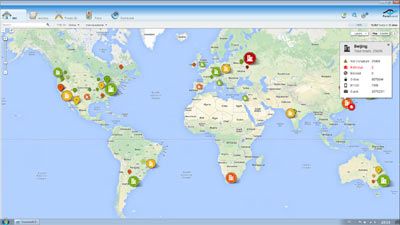FORESCOUT TO EXTEND ENDPOINT VISIBILITY AND CONTROL BEYOND THE ENTERPRISE NETWORK
FORESCOUT TO EXTEND ENDPOINT VISIBILITY AND CONTROL BEYOND THE ENTERPRISE NETWORK
Published by Gbaf News
Posted on February 25, 2014

Published by Gbaf News
Posted on February 25, 2014

Taking anti-corruption enforcement to a new level, the World Bank Group today announced the debarment of two companies and, separately, the first-ever World Bank cross-debarments of firms, for engaging in corrupt and fraudulent practices in development projects. The announcement comes on the eve of the International Corruption Hunters Network meeting, which takes place December 6 – 8 at the World Bank’s headquarters.
“These enforcement actions are timely, coming as they do just before our meeting next week with the International Corruption Hunters Alliance.Our hope is that the Alliance will facilitate our investigations and increase their impact to further eliminate fraud and corruption risks impacting development resources,” said Leonard McCarthy, World Bank Vice President for Integrity (INT). “An important item on our agenda is stepping up enforcement action as part of a global enforcement regime. These are examples of cases that could be scaled up with the support of Alliance members given the network’s multi-jurisdictional impact.” He also added that managing fraud and corruption risks is a prominent feature of the World Bank Group’s Governance and Anticorruption (GAC) agenda.
Kwaplah International Trading Co., Inc., a U.S.-based company, and its owner, Mr. Sherlock Mahn, together with any organization they directly or indirectly control, have been debarred for 12 years for engaging in corrupt and fraudulent practices in Bank-financed projects implemented in the Democratic Republic of Congo, Tanzania, Ethiopia, Ukraine, Ghana, Gambia and Liberia. This is the second-longest debarment since the Bank began sanctioning firms in 1999. In making its decision, the World Bank’s Sanctions Board took into account the multiplicity of sanctionable practices committed by the company among other considerations. “This Sanctions Board Decision has laid down some brightline rules, following an extensive INT investigation that crossed multiple jurisdictions,” said Mr. McCarthy. “Companies and individuals who misuse development resources should know that, together with our partners, we are stepping up the fight against fraud and corruption, and they will be caught,” he added. In addition, the World Bank Sanctions Board debarred another company, “Elkri” for three years for engaging fraudulent practices in a Bank-financed project in Albania. The debarment may be reduced to two years upon implementation of an effective corporate compliance program. These rulings are eligible for cross debarment under the April 2010 Agreement for Mutual Enforcement of Debarment Decisions entered into by the African Development Bank Group, Asian Development Bank, the European Bank for Reconstruction and Development, the World Bank Group and the Inter-American Development Bank Group. Under the agreement, entities debarred by one multilateral development bank (MDB) may be sanctioned for the same misconduct by other participating development banks, which translates into collective enforcement action. Based on that agreement, the World Bank also announced the its first cross-debarments, sanctioning 12 companies previously debarred by the Asian Development Bank for engaging in fraudulent and corruption practices in some of their projects. “Since the signing of the Cross-Debarment agreement earlier this year, INT has worked diligently with our MDB partners to ensure that enforcement is not delayed,” said McCarthy.“This enforcement action is sending a very powerful signal of how the global anticorruption landscape is fast forwarding. This progress cannot be reversed,” he added. About the International Corruption Hunters AllianceOver 200 anti-corruption officials from more than 134 countries will meet for the first time at the World Bank’s headquarters in Washington on December 6-8, 2010 to help facilitate the investigation and prosecution of corrupt actors, including those who defraud World Bank projects. The meeting of the International Corruption Hunters Alliance, which flows from regional networks of anticorruption enforcement personnel the World Bank established over the past two years, will enable officials from developing countries to interact with counterparts from OECD countries, share information, and work toward a global enforcement regime.
Explore more articles in the Technology category











